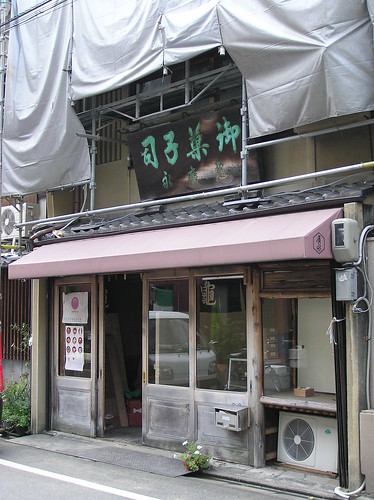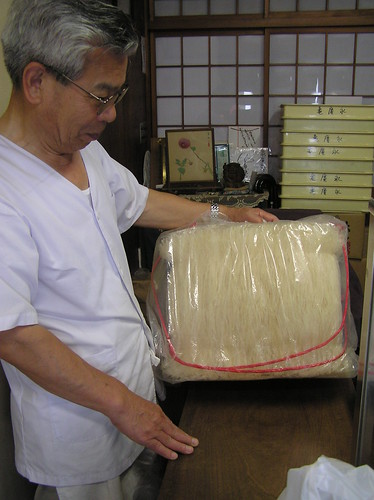
Day forty-three: Kameya Hironaga
If you're ever in Kyoto and need to give someone the slip, just tell them to meet you for sweets at either Kameya or Tsuruya. Because kame (turtle) and tsuru (crane) are auspiciously long-lived, there are at least a dozen shops named after each in central Kyoto alone.
Kameya Hironaga is tucked away on a small street in the Nakagyo district; on my way I was distracted by stray cats, crumbling buildings, and a shop selling specialty toilet papers ("Silltty Roman" brand, and one printed with English lesson vocabulary) before I spotted the sign I was looking for, half-hidden by scaffolding. I approached cautiously, not sure I was ready for a gritty, real-life sweets experience. The window displays were not encouraging; the sweets were so sun-bleached, parched, and fly-spotted it was hard to tell what they had once been. I looked in the door noncommittally and was about to give the closet-sized shop a miss when a tiny woman appeared out of the gloom and gave me the biggest and most genuine smile I've ever seen in wagashiya. She coaxed me in and started chatting as I looked around for something sanitary to buy.
Happily, it turns out that proprietors of this 90-year old shop funnel their funds into making sweets rather than displaying them. They make simple products of the best ingredients, and are particularly known for producing slabs of silky, coffee-colored kanten jelly flavored with kurozato, a black sugar from Okinawa (¥1050 for a large bar). The shop master explained that when he was young, white sugar was rare and desirable while kurozato was just what was on hand. Now the situation has reversed drastically, with dire consequences for many wagashi makers who want to stick to the old ways; he says the customers who keep coming are the ones who understand the difference between one sugar and another. His kanten is also of higher quality than the grocery store kind, and a block like the one he's showing off below costs ¥30000 (around $300).
So many of Kyoto's wagashi shops are gleaming showplaces that it can be hard to remember that wasgashiya have, at times, been as much a part of community as the corner shop or dive bar. When I say that Kameya Hironaga is a hole in the wall, I mean it in the nicest possible way. My hostess invited a few friends for dinner tonight and after the feast I served up small slices of the chilled jelly; it was just the right ending to a big meal and a hot, dusty day.




No comments:
Post a Comment